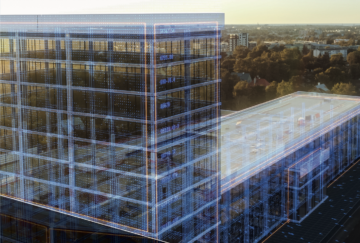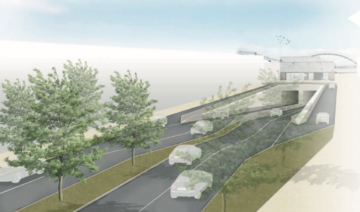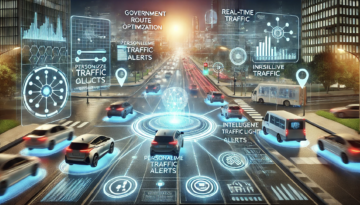BIM and digital twin for road safety and sustainability

The Department of Mobility and Public Works aims to make our mobility system more efficient by means of methodical digital solutions. They therefore are implementing BIM, a virtual way to build and collaborate on our infrastructure. Their goal? Setting up a ‘digital twin’: digital equivalents of our infrastructure and artworks. With these solutions they will be able to create analytics for optimal management via machine learning and smart data collection. To achieve that goal, collaboration is crucial.
Objectives
There are 3 definitions for the concept of BIM, each of which is important to the Department of Mobility and Public Works.
1. Building Information Model
A BIM model is a digital (3D) representation of a project, to which information is linked. Therefore, it can contribute to a better perception of project partners and stakeholders, which in turn can lead to faster decision-making.
2. Building Information Modelling
BIM also stands for intelligent data sharing between the different partners of a project via a common exchange platform and uniform processes. This allows knowledge transfer to run smoothly, increases project quality and reduces possible failure costs.
3. Building Information Management
This definition focuses on the intelligence of the BIM model and the management of the information linked to it. Transmitting information during the structure’s life cycle, without loss of data or quality, is the greatest challenge here.
By working in a BIM-oriented way, they collect and manage all available information about our infrastructure throughout its entire life cycle efficiently. By using this up-to-date, standardised and reliable information, they can optimise human inspection and other means of maintenance and operation, and even work preventively.

Optimal maintenance of infrastructure
BIM is a first stepping stone in their process of improving their asset management and taking into account lifecycle costs. They rely on up-to-date, complete, standardised and reliable information for management, maintenance and operations. That will allow them to reduce human monitoring over time and allocate those resources to automated prevention and alarm system solutions for maintenance.

Help build the mobility of tomorrow
Cross-border collaboration is needed to make large-scale implementation of these innovations possible. For example, they are working with the road authorities in the Benelux on improving data exchange and setting up a ‘digital twin’ for cross-border corridors. The successful construction of a ‘digital twin’ and an investment programme focused on road safety and sustainability are now their priorities. That is why they are looking for international practices and experiences in this field. Equally, they would love to share our own.
This article is provided by the Department of Mobility and Public Works

Latest insights & stories

Recticel launches the RE-engineered IP PIR insulation
Recticel is committed to high-performance insulation solutions that continuously reduce its carbon footprint, without compromising on the most stringent technical requirements.

MOBILIDATA
In Flanders, we strive to work on tomorrow’s mobility today. That includes the Mobilidata programme. With this programme, various levels of government, companies and researchers are jointly developing innovative, technological traffic solutions for road users, such as better route advice, tailored traffic notifications and intelligent traffic lights. New connected mobility and know-how do not stop at our national borders however, so international collaboration is needed to exchange knowledge and set up joint projects to implement it.

Digital sovereignty guarantees data security in the public cloud
When companies consider migrating to the public cloud, they are sometimes held back by security risks and compliance and governance constraints. Thus the interest in digital sovereignty, Gwénaëlle Hervé, Public & Sovereign Cloud Lead at Proximus NXT, explains.